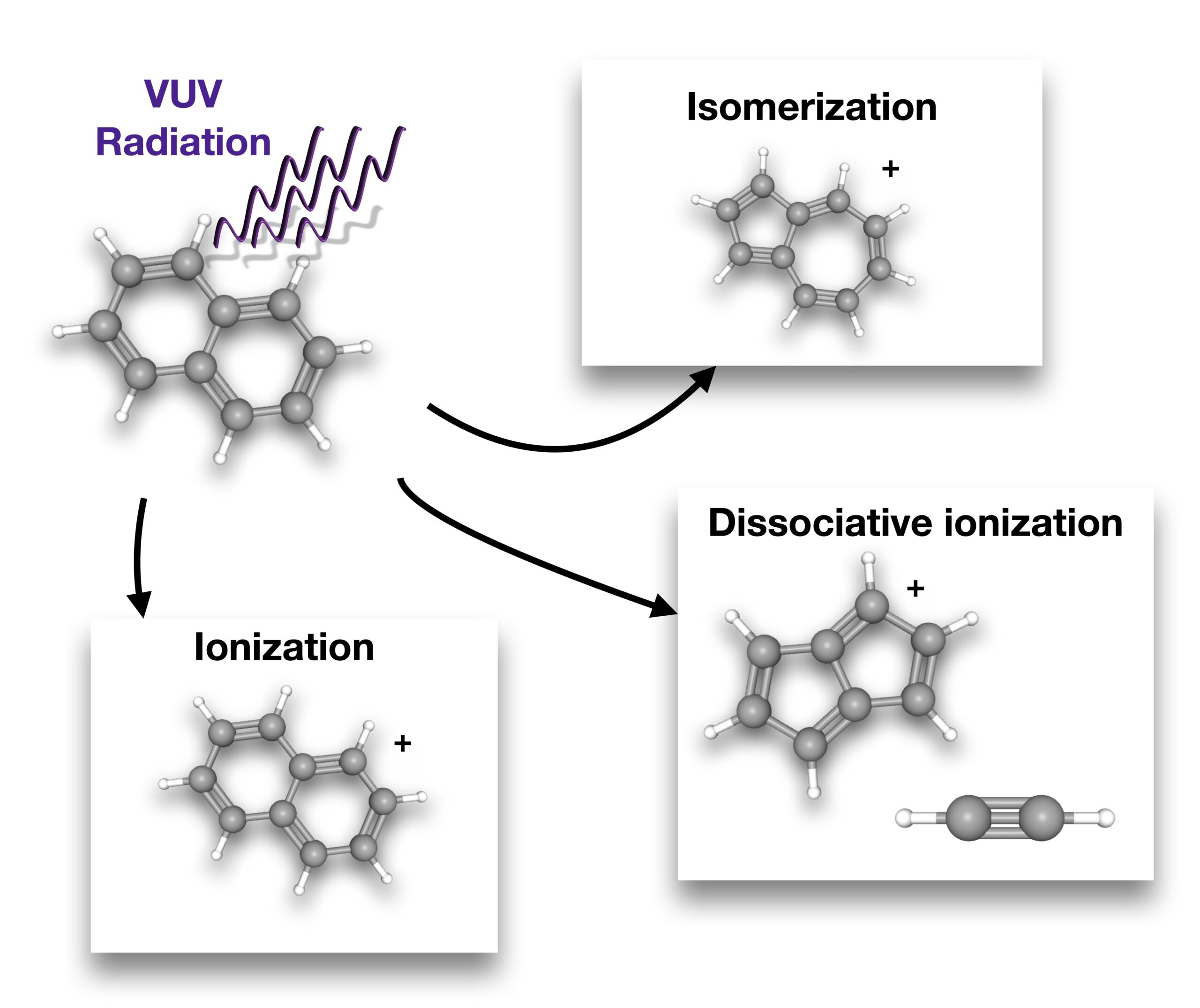The relaxation of highly excited electronic states of neutral or charged molecules is studied experimentally, with a particular focus on dissociation processes following excitation by a VUV photon. Fragmentation plays a major role in several astrophysical environments (planetary atmospheres, comets, circumstellar envelopes of red giant stars, etc.), as it produces highly reactive radical species that are subsequently involved in complex networks of chemical reactions at work in the carbon or nitrogen chemistry of these media. Our research group masters several different detection techniques to obtain information on the nature of the photodissociation products as well as their internal energy states. A particular effort is made to measure absolute photodissociation branching ratios for different fragmentation pathways, in order to improve photochemical models of these astrophysical environments. A very interesting outcome of this research activity is the measurement of absolute photoionization cross sections for a number of small radicals, as these data are essential to extract quantitative information from mass spectra. It is also worth noting that work is being carried out using an ion trap (SRMS2) on the DESIRS beamline at the SOLEIL synchrotron, to study the photoprocessing of interstellar ions, in particular to monitor the evolution of the branching ratio between fragmentation and ionization as a function of photon energy.

Contacts:
Séverine Boyé-Péronne
Bérenger Gans
Ugo Jacovella